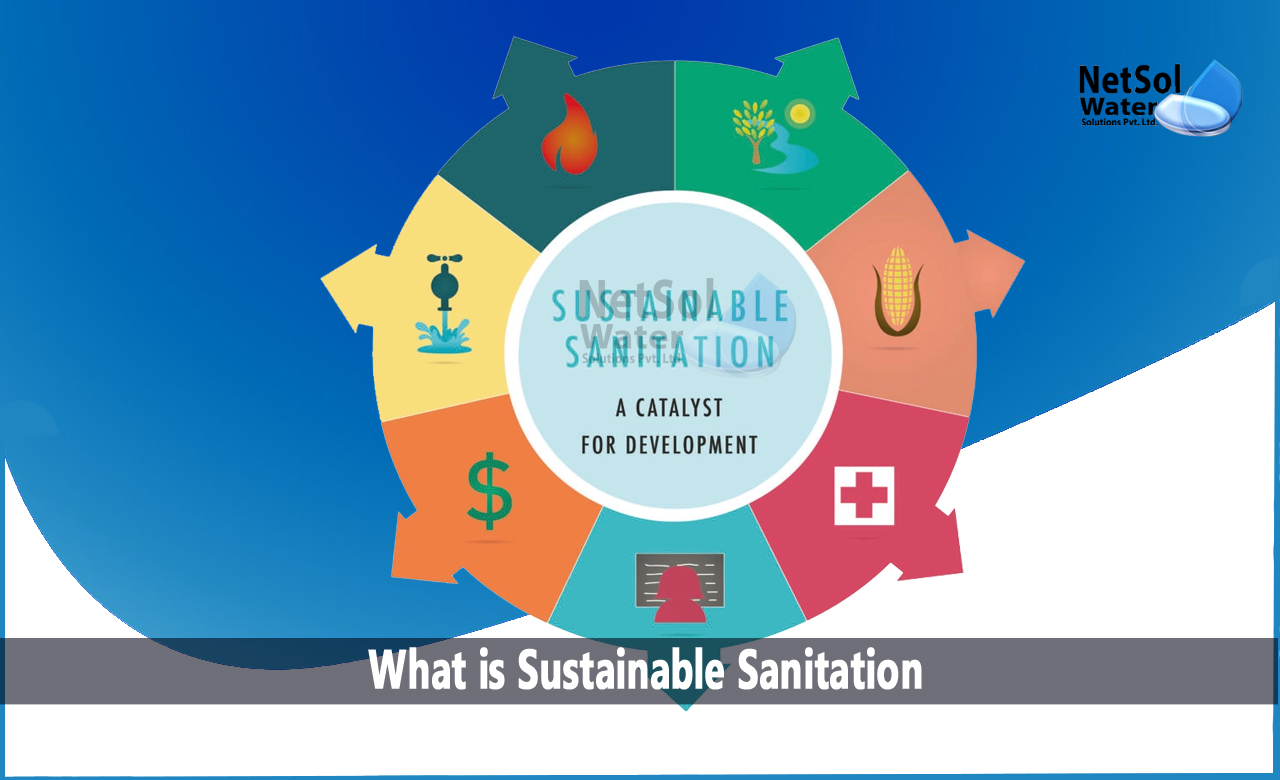Traditional sanitation practices have often been harmful to the environment, consuming large amounts of water, producing large quantities of waste, and releasing pollutants into the environment. Sustainable sanitation practices seek to address these issues by using innovative technologies and systems that are more efficient and environmentally friendly.
What is Sustainable Sanitation?
Sustainable sanitation is an approach to sanitation that focuses on minimizing environmental impact while promoting public health and preserving natural resources. Traditional sanitation practices can have significant negative effects on the environment, including water pollution and depletion of natural resources.

Issues Addressed by Sustainable Sanitation:
Sustainable sanitation practices aim to address these issues by promoting the efficient use of resources and minimizing waste:
· Water Conservation.
One aspect of sustainable sanitation is water conservation. Traditional sanitation practices can use large amounts of water, which can lead to water scarcity and depletion of freshwater resources. Sustainable sanitation practices aim to reduce water consumption by using water-efficient technologies and encouraging behaviors that conserve water.

· Waste Reduction.
Another important aspect of sustainable sanitation is waste reduction. Traditional sanitation practices often generate large amounts of waste, including both solid and liquid waste.
This waste can have negative impacts on the environment, including pollution and the emission of greenhouse gases. Sustainable sanitation practices aim to reduce waste by promoting the use of composting toilets and other waste reduction technologies.

· Energy Efficiency.
Sustainable sanitation practices also prioritize energy efficiency. Traditional sanitation practices often require large amounts of energy to operate, including energy for pumping and treating wastewater.
Sustainable sanitation practices aim to reduce energy consumption by promoting energy-efficient technologies and using renewable energy sources.

· Biodegradability.
Another important aspect of sustainable sanitation is biodegradability. Traditional sanitation practices often rely on chemical treatments that can be harmful to the environment. Sustainable sanitation practices prioritize the use of biodegradable treatments that break down naturally in the environment without causing harm. A lot of stress should be put on Biodegradable Plastics.

· Public Health.
Sustainable sanitation practices also prioritize public health. Traditional sanitation practices can lead to the spread of diseases and illnesses, especially in areas with poor sanitation infrastructure. Sustainable sanitation practices aim to promote public health by reducing the risk of disease transmission and promoting hygiene practices.

Some examples of Sustainable Sanitation.
There are many examples of sustainable sanitation practices in use around the world. One example is the use of composting toilets, which use natural processes to break down human waste into compost. Composting toilets can be used in areas without access to traditional sanitation infrastructure and can also help reduce the amount of waste generated by traditional toilets.
Another example of sustainable sanitation is the use of wetlands for wastewater treatment. Wetlands can naturally filter and treat wastewater, reducing the need for energy-intensive treatment processes. This can help reduce energy consumption and promote the efficient use of resources.
Rainwater harvesting is another example of sustainable sanitation. By collecting rainwater, it can be used for various purposes, such as toilet flushing and irrigation, reducing the need for freshwater resources.
Challenges and Future Directions
While sustainable sanitation practices have many benefits, they also come with their own set of challenges.
One of the main challenges is changing people's attitudes and behaviors towards sanitation. Sustainable sanitation practices often require changes in habits and the adoption of new technologies, which can be difficult to achieve.
· Another challenge is the cost of implementing sustainable sanitation systems, which can be high. This is especially true for developing countries that may not have the necessary resources to invest in sustainable sanitation infrastructure. However, the long-term benefits of sustainable sanitation practices often outweigh the initial costs.
· Despite the challenges, the future of sustainable sanitation looks promising. Advancements in technology are making sustainable sanitation practices more efficient and cost-effective.
· Additionally, there is a growing awareness of the importance of sustainable sanitation in preserving the environment and promoting public health.
Summary:
Sustainable sanitation is an essential approach to promoting public health, preserving natural resources, and minimizing environmental impact. By prioritizing water conservation, waste reduction, energy efficiency, biodegradability, and public health, sustainable sanitation practices can help create a cleaner, healthier, and more sustainable environment for all. Examples of sustainable sanitation practices include composting toilets, wetlands for wastewater treatment, and rainwater harvesting. As awareness and technology continue to advance, the future of sustainable sanitation looks promising.
Leading manufacturer of sewage treatment plants in India.
Netsol Water is the leading manufacturer, supplier, and exporter of a quality selection of water treatment, and wastewater treatment products in India, by using advanced sewage treatment methods.
RO plants, water softeners, ETPs, STPs, DM plants, AMC, O&M, Ultra filtration, UV, Ozonation, ZLD plants, Anoxic tanks, and other goods and services are available from us. We also provide services to businesses in sectors including automotive, pharmaceutical, textile, pulp & paper, beverages, refineries, schools, hospitals, office buildings, and hotels, among others.
Call us at +91 9650608473 or email at enquiry@netsolwater.com for further information.



